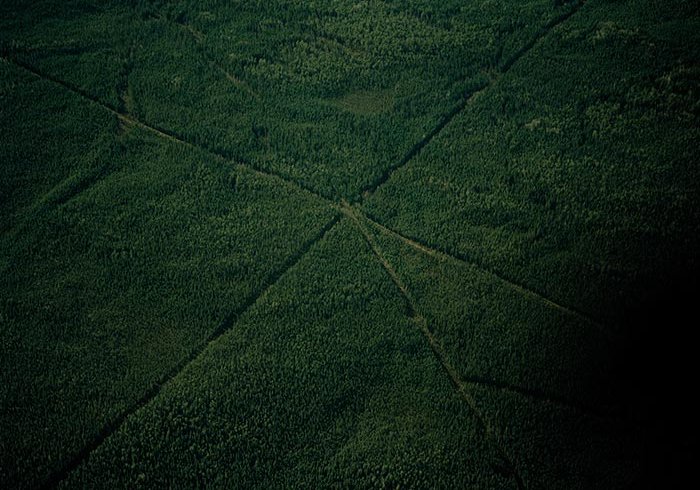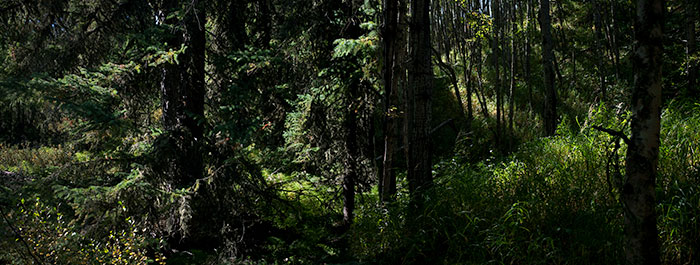
My parents and I arrived in Grande Cache, Alberta, in 1976, the year I was born. The town had been recently carved out of the dense wilderness to service the new coal mine where my father had found a job. From the back window of our bungalow, the boreal forest stretched north, largely unbroken, for hundreds of kilometres to the tundra, a dark tangle of trees, mysterious and forbidding. One neighbour found that a wolverine had eaten through his cabin’s roof and ripped open cans of food. Grizzly bears, wolves, and lynx roamed the woods around our town.
As dark as it appeared from my kitchen door, the forest became something very different when I entered it: an endless web of soft-floored rooms, each one unique, connected by narrow trails rising, falling, and weaving throughout the pine and spruce. It gave me a deep feeling of well-being and excitement. These hidden places, the mottled sun on the forest floor, the fresh smell of so many plants and trees, formed my strongest childhood memories in the Alberta foothills. We left when I was six.
Stretching from Newfoundland to the Yukon, the boreal forest is our Amazon. It acts as the lungs of the world, our largest terrestrial carbon storehouse. Thousands of species, some of them endangered, make their home there. The first great human threat was the fur trade, which led to the beaver’s decline. Human settlement, agriculture, and forestry followed. Today the greatest menace is mining activity, including oil and gas exploration and extraction. In Alberta, the amount of land cleared each year for seismic lines, a vast network of exploratory roads, already compares with that cleared for logging; unlike logged areas, seismic lines rarely recover. There is no economic incentive for rehabilitation. Natural gas extracted via these roads fuels one of the largest industrial projects in history, the Alberta oil sands.
It’s a complicated story—hopeful or depressing, depending on where you look. In New Brunswick, 81 percent of the forest has been accessed by industry. Southwest of James Bay in Manitoba and Ontario, the Ring of Fire houses a motherlode of mineral deposits beneath the world’s third-largest stretch of intact forest, over 500,000 square kilometres. It is on the brink of a massive development that is already drawing comparisons to the dawn of Alberta’s oil sands production in the 1960s. Each seismic line that penetrates the forest opens up further access, and fragmentation continues to degrade the health of the entire ecosystem. Planning is likewise fragmented among government bodies with competing goals of protection versus development. In 2010, the Canadian Boreal Forest Agreement created a tentative partnership among logging companies and environmental groups to protect critical woodland caribou habitat, but the long-term goal of preserving 50 percent of the boreal forest remains in the nascent stage. Only 8.5 percent of Canada’s land mass is under permanent protection, well below the global average.
Recently, I drove into Grande Cache from the north, on a road that didn’t exist when I lived there. The coal mine that once supported my family had closed and reopened. It had also paved the way for extensive industrial development. Old-growth coniferous forest is now interspersed with second-growth deciduous. The local woodland caribou, a sensitive species and a good indicator of the ecosystem’s health, is in precipitous decline. Yet the feeling of freedom and well-being that the forest has always given me remained. It was, and still is, enough to know that such a large wild expanse exists, and that billions of birds will breed there again next spring. The boreal forest will take care of itself—if we allow it enough room to breathe.
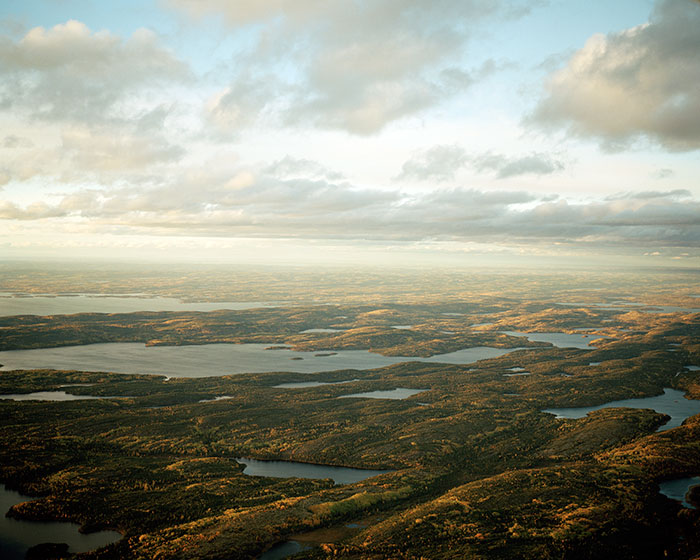
Looking north from Lake Athabasca, Saskatchewan, to the Northwest Territories, late September: It took root 10,000 years ago as the glaciers receded and soil began to form. While it covers 50 percent of the country’s land mass, in many areas the accumulated soil is less than twenty-five centimetres thick above solid rock.
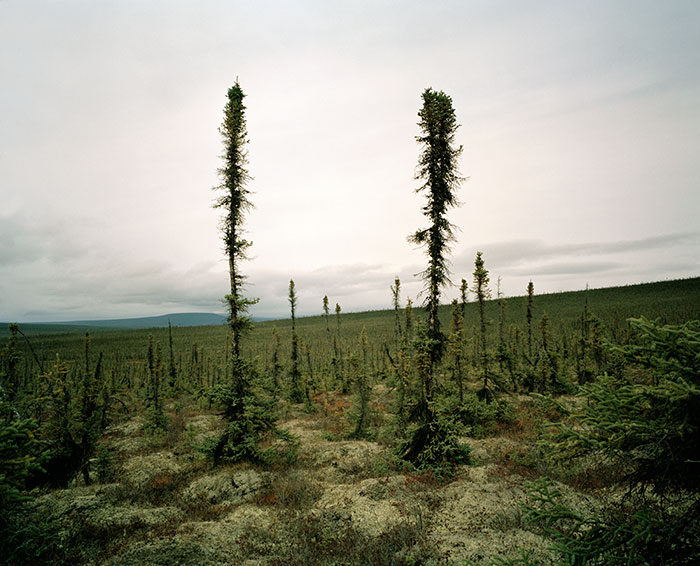
Just below the Arctic Circle, Yukon, mid-September: At this latitude, trees can take sixty to eighty years to reach a diameter of under a dozen centimetres. Lichen and moss cover make it difficult for seeds to take root, and wildfires can cause large forest swaths of a uniform age.
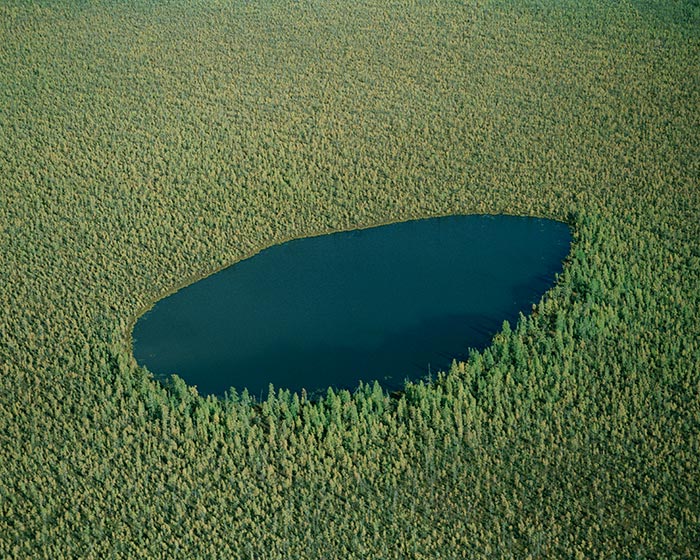
Northeast of Wabasca, Alberta: The boreal forest contains 1.5 million lakes and 80 percent of the world’s unfrozen fresh water.
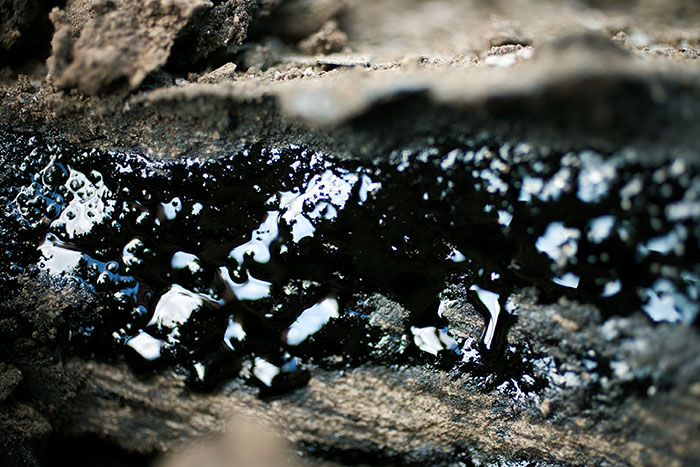
Muskeg River Mine, near Fort McKay, Alberta: Raw bitumen, a tar-like hydrocarbon compound used for roofing and road surfacing, is extracted from deep in this Shell-owned mine. It takes two and a half to four four barrels of water to produce one barrel of bitumen.
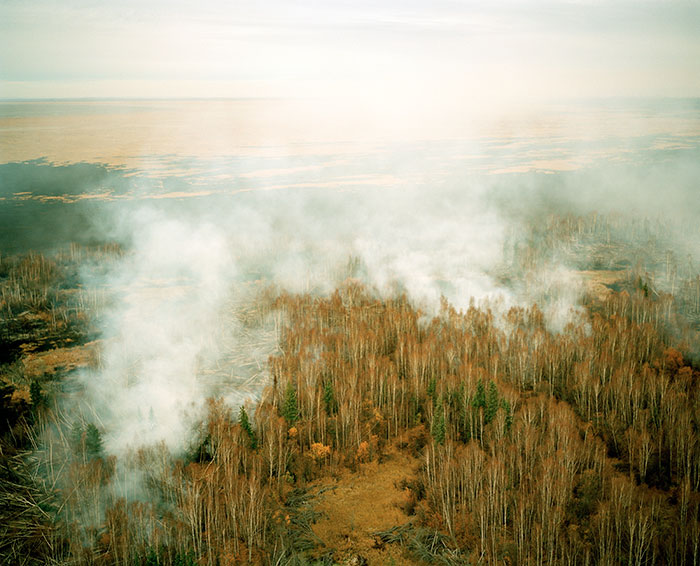
East of Fort St. John, British Columbia: Some 9,000 wildfire each year contribute to the forest’s natural regeneration. For example, Jack pine cones require extreme heat to release their seeds.

Log sort near Fort Frances, Ontario: One in sixteen Canadians works in the forestry sector, which generates over $40 billion in exports annually.
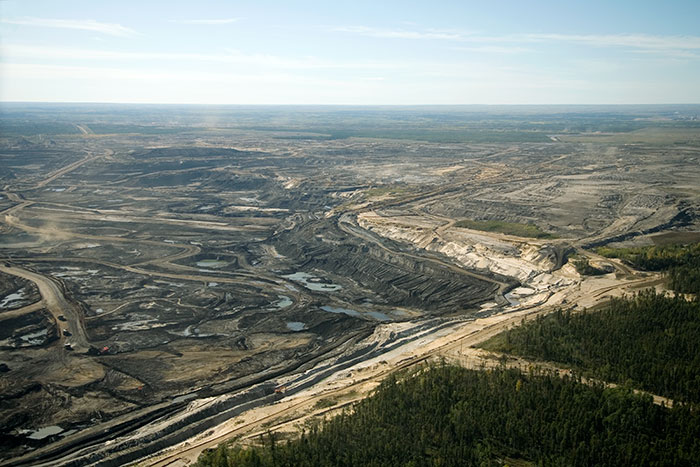
Athabasca Oil Sands Project, Alberta: Looking south from the Muskeg River Mine’s northern edge. The AOSP can produce 155,000 barrels of crude per day. Its majority owner, Shell Canada, plans to increase that to more than 500,000 barrels per day.
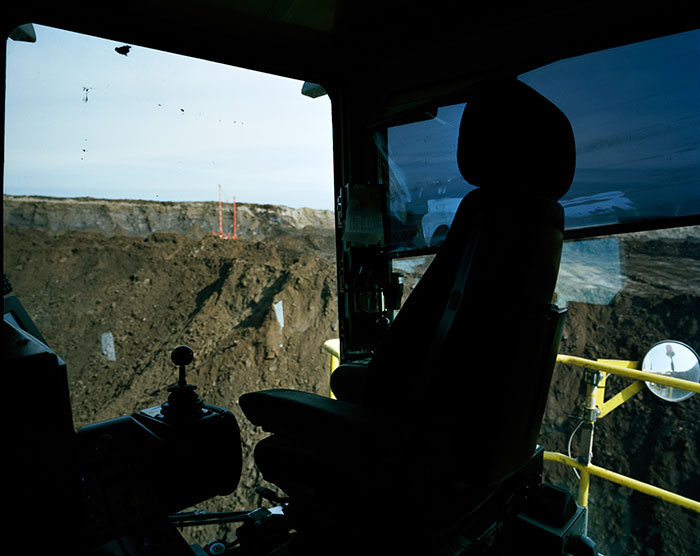
Muskeg River Mine, Alberta: This digger, standing two storeys high, rarely sits idle. Here, a Greenpeace protest disrupted work for more than thirty hours. The oil industry calls the forest and soil covering the bitumen deposits “overburden.”
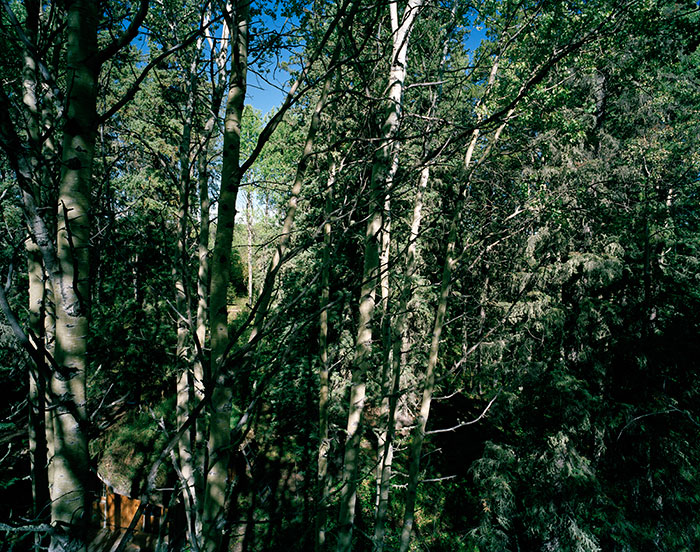
Demmitt, Alberta: Alberta can push pipes through any property. Peter von Tiesenhausen has copyrighted 324 hectares as a work of art, to keep the pipelines off his land and to prevent what happened to the Lubicon Lake Nation. The band unsuccessfully fought development for decades; earlier this year, a pipeline spilled millions of litres of crude. Whether the copyright will stand up in court remains to be seen.
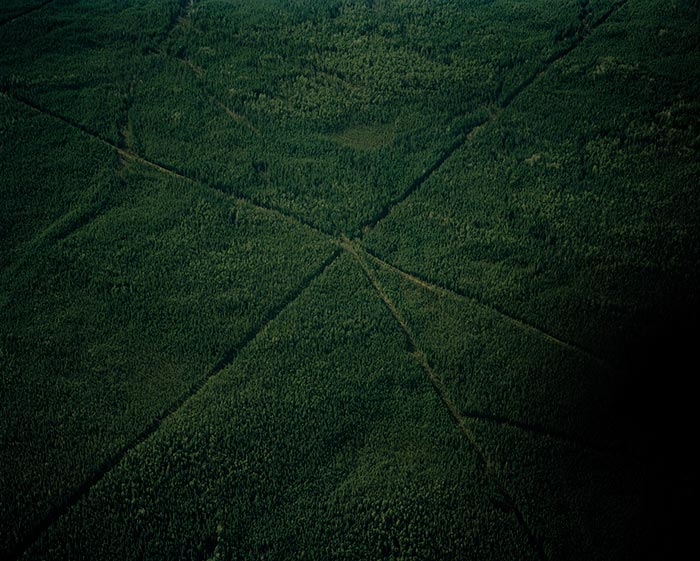
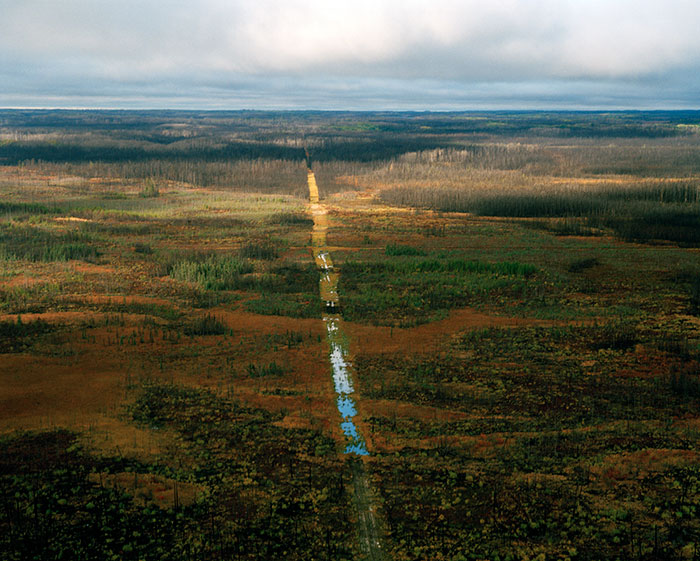
Top: northern British Columbia; bottom: northern Alberta: Seismic lines now criss-cross the boreal forest, forming a network of roads and paving the way for future development. In Alberta, 88 percent of cutlines twenty years old or more have not yet recovered and regrown. Instead, they collect water and become canals.
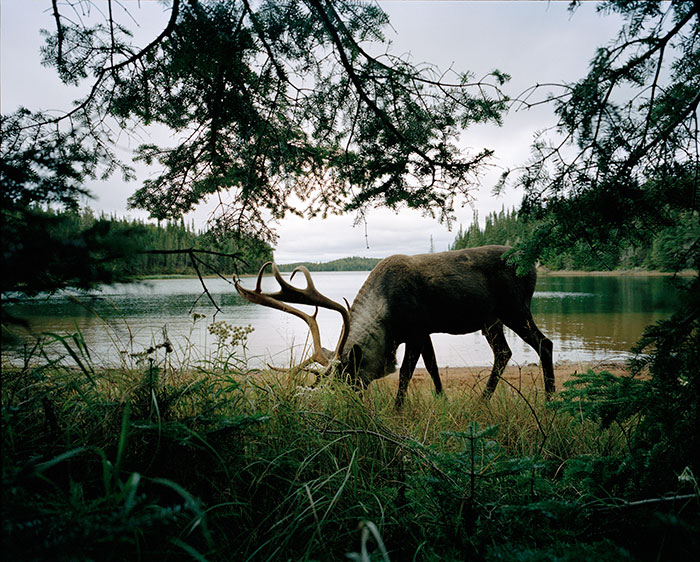
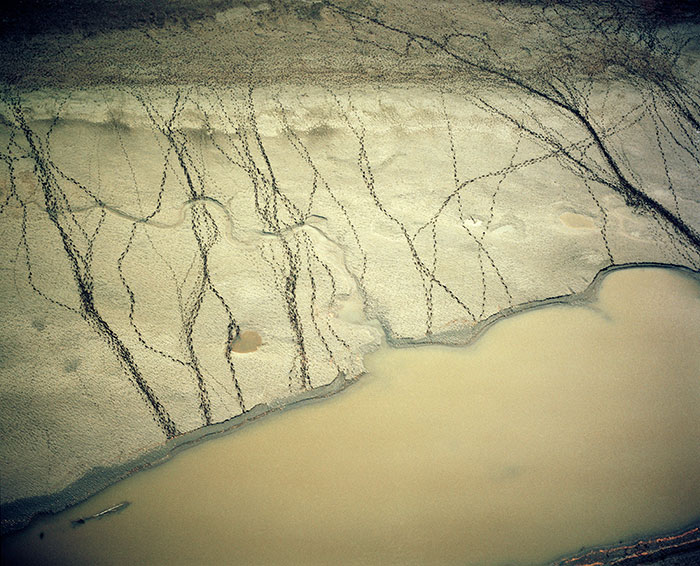
Top: Slate Islands Provincial Park, Ontario; bottom: tracks, northern British Columbia: Cutlines harm woodland caribou by making way for predators. “The science is clear on what is required to safeguard boreal caribou populations,” says Dr. Justina Ray, executive director of Wildlife Conservation Society Canada. “Yet decision-makers rely on attempts to mitigate impacts of development, which is far less effective than preventing development in the first place.”
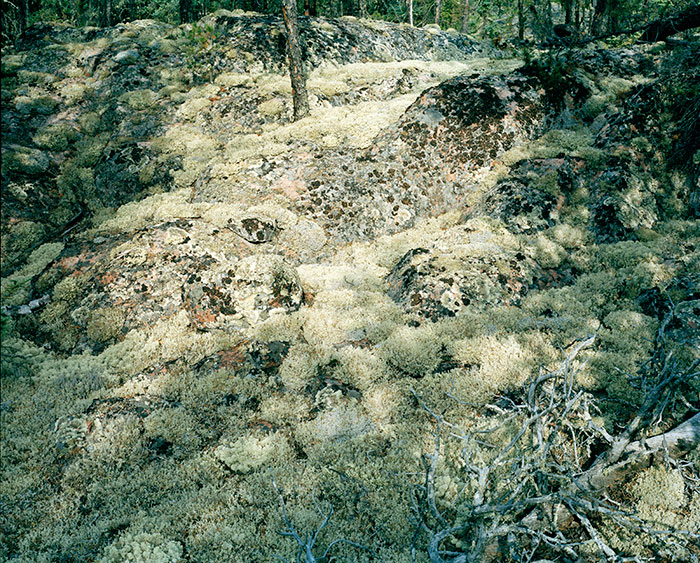
Northern Saskatchewan: The boreal forest is full of wildlife, with reptiles and amphibians (forty-six species of each), mammals (152) and birds (383). In all, twenty-three species are currently endangered, another sixteen are designated as threatened, and sixty-five are considered vulnerable. The fate of their home—and of our boreal forest—rests squarely in our hands: the Canadian public owns 94 percent of it.
This appeared in the November 2011 issue.

